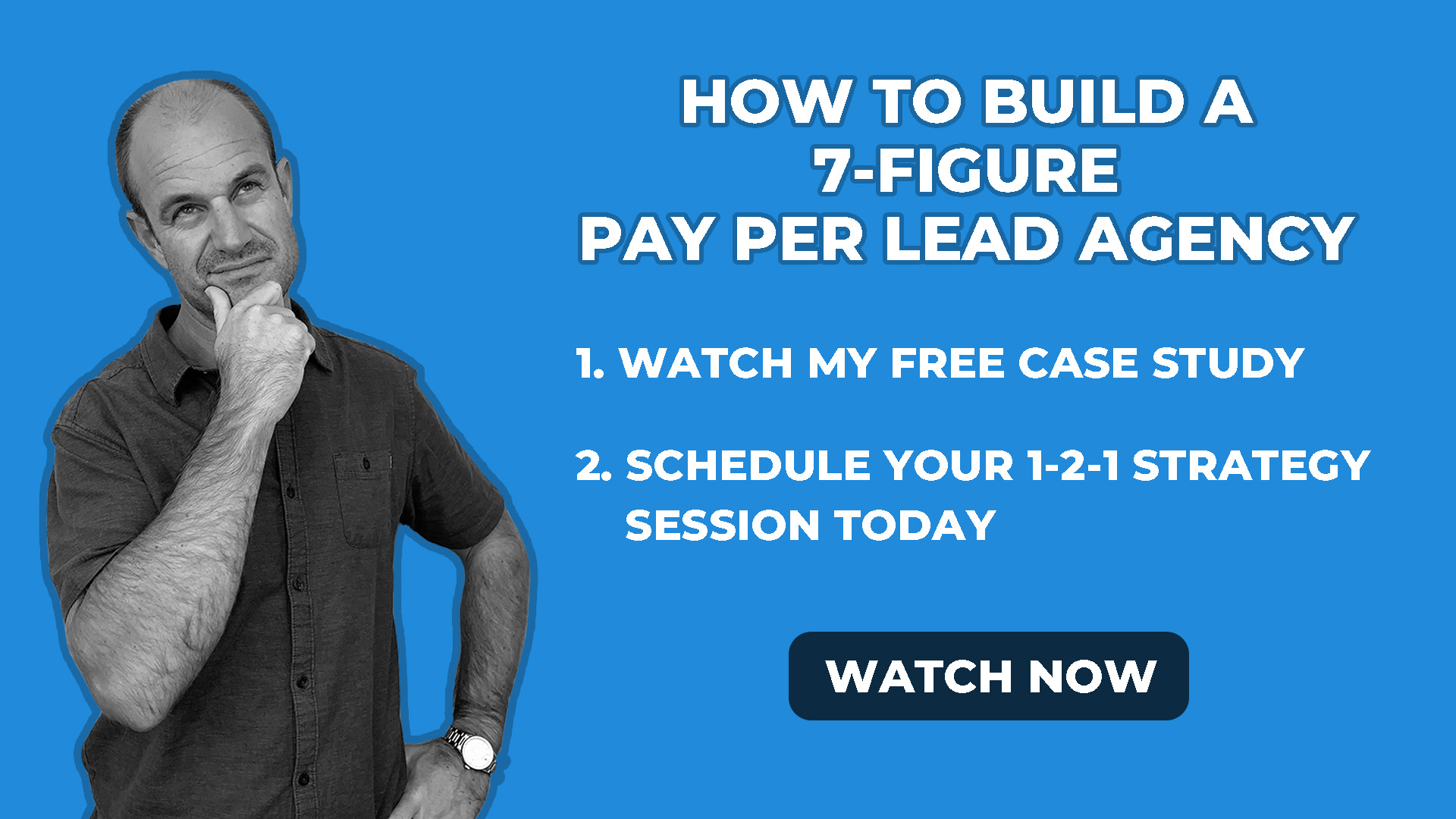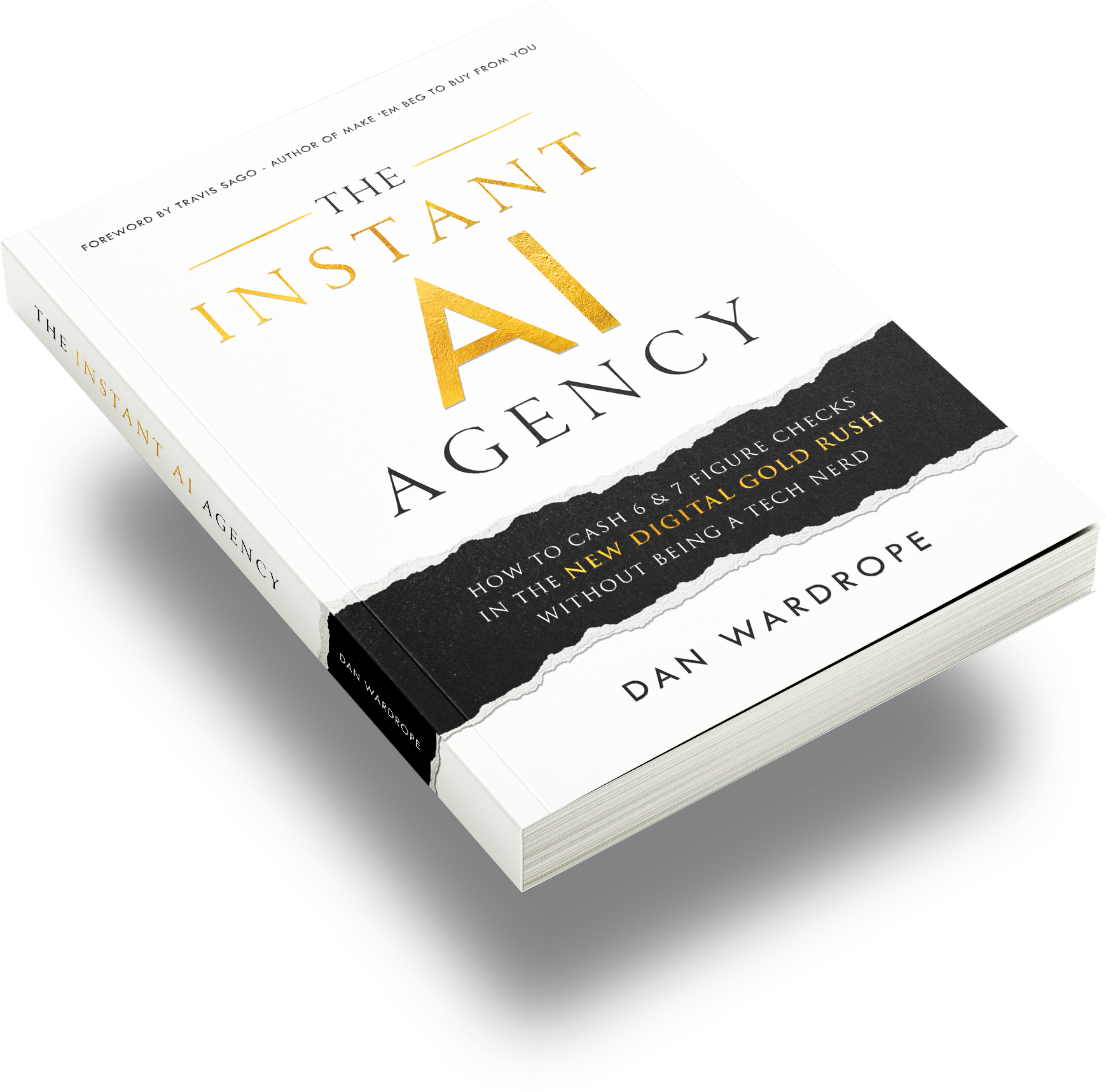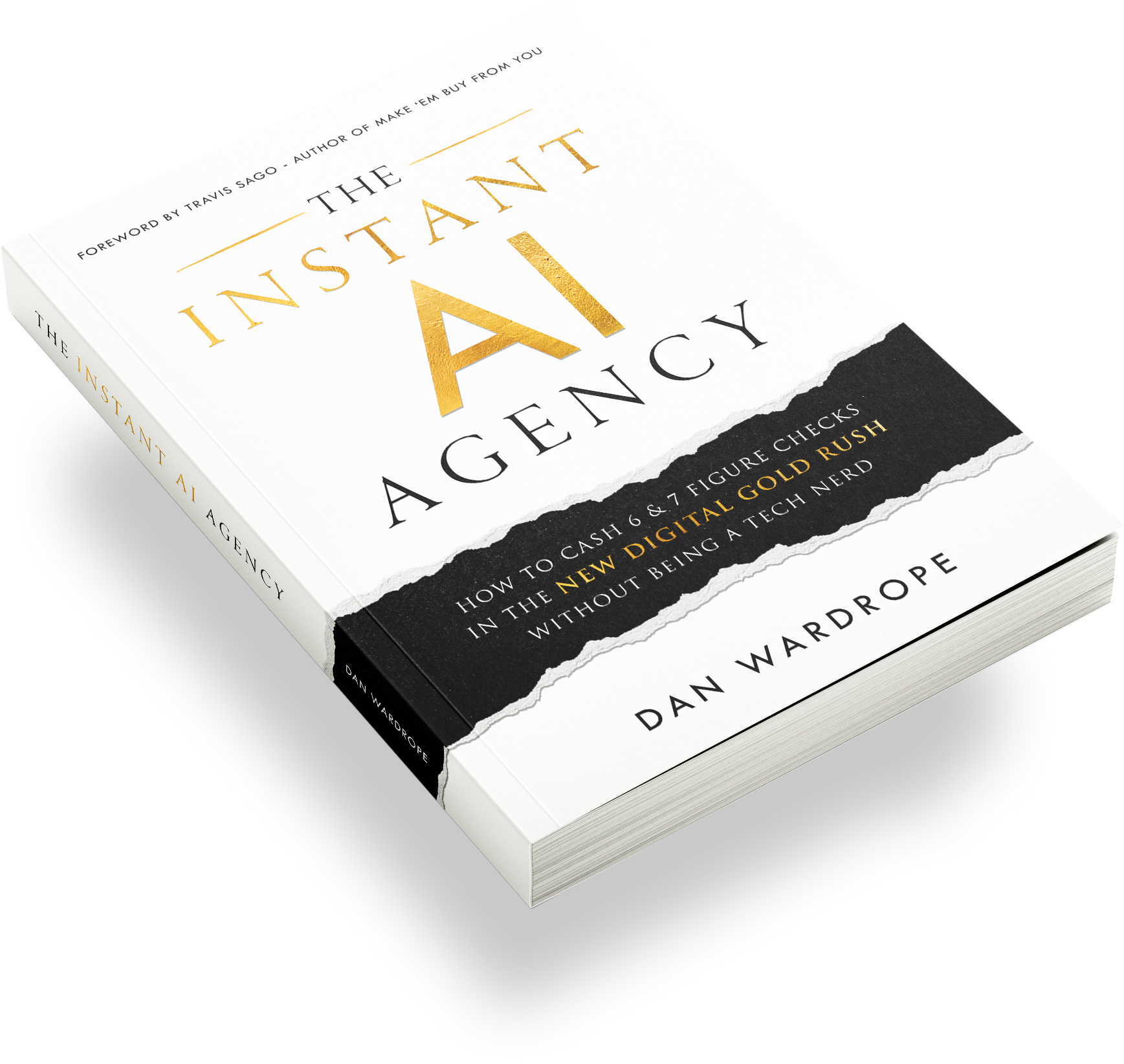When it comes to Facebook ad hacks, most people stick to the same old, same old.
Usually, I see nuggets of advice like, “make sure you use a clear picture!”
While this is good info (at its most basic), I’d be sincerely worried about any serious marketer who put up a pixellated image in their ad.
These ad hacks go beyond the basics. They’ve worked amazingly well for us, and we think it’s time we shared our finds with you (because we’re nice people).
Now, I’ll be honest with you. None of these hacks will net you global success literally overnight. You’re not going to wake up with your mattress transformed into a stack of cash.
However, with perseverance and the willingness to test, test, and test, you’ll see your conversions and ROI go up in no time.
As any good marketer knows… It takes quite a few months to become an overnight success.

So, Let’s Start With A Bit Of Logic…
According to the Oxford English Dictionary, an advertisement is “a notice or announcement in a public medium promoting a product, service or event.”
So, going by this dictionary definition, you should be using your Facebook advertisements to promote your products as often as you can, right?
Wrong.
Facebook doesn’t follow this kind of logic. Primarily a platform for connecting with family and friends, bragging about how great your life is, and stalking old exes, nobody initially goes on Facebook to buy anything.
Successful advertising on Facebook isn’t so much upping your game as changing the name of the game entirely. You’re in direct competition with heartfelt statuses, funny posts, holiday snaps and ultrasounds.
People go on Facebook to learn…kinda. Reading about other people’s lives and the hot new social trends is a form of learning.
This means your ad, the one that says “BUY THESE SHOES, 50% OFF”, is nothing more than an interruptive pain in the buttocks.
People know when they’re being sold something, as it happens to them hundreds of times a day. As a result, they develop something I call “ad blindness” – a recognition of all forms of advertising on almost a subconscious level.

Facebook advertising requires a little more stealth. It’s like you’re tricking a user into reading your advertisement while, simultaneously, being completely open about what you’re trying to do.
Check out these three ad hacks, and start using them immediately. You’ll see the results in hours!
Facebook Ad Hack #1: The Dummy Fan Page
This is a super-sneaky ad hack we’ve been using in our agency for the last six months or so, and it works like a charm.
In fact, I can’t believe that Facebook hasn’t cottoned on.
This kind of Facebook ad hack is timeless (not only for 2019), but so few people are using it, it still seems kinda new.
As Facebook users get smarter, the cost per lead for most Facebook agency owners is going up in a big way.
Obviously, that’s not great news. It’s like having a deep cut on your arm and not enough towels to staunch the wound.
… And this is where your dummy fan page comes in.
Set up a new page on Facebook and give it a character. It doesn’t matter if it’s a man or woman, just make them seem like a real person that someone can trust. (So, choose your photo carefully!)
Any name will do, so you can be as imaginative (or not!) as you like. John Smith, Joe Bloggs… whatever works for you.
Once you’ve created this imaginary person, you can start running your ads through their page.
How Does It Work?
You see, when it crops up on a user’s newsfeed, it’ll look like a bonafide recommendation from someone’s old forgotten schoolfriend or a distant relative.
Then, once the user is lured into the net and makes the click, we send them straight to an advertorial recommending our service.
Whether they feel like they’re in too deep, or were genuinely interested, this ad hack is brilliant at picking up leads. It works best for those who are qualified but generally avoid making purchases or decisions on Facebook.
By using this one ad hack, you won’t have to give up on Facebook and treat it as a distant age of advertising past. You can still harvest cheap clicks and leads… you just have to know how to do it.
Extra Sneaky Ad Hack #1.5:
Time permitting, nurture your avatar’s fan page.
This ad hack will work much better if a user doesn’t click on your page and just see ad after ad after ad (they might clock on).
Add in posts that users will value, from external sites in the same niche or even from your blog.
As long as your page boasts informative content and articles people want to read, users will be mollified when they realise you’re not Great Aunt Joan, estranged for the last 15 years.
Facebook Ad Hack #2: Collection Ads
When it comes to Facebook ad formats, most people like to keep it safe.
Don’t worry, I totally get it.
Single image ads are the workhorses of the Facebook advertising world: they do their job, they do it well, and they’re usually pretty reliable.
The thing is, no matter how much good work the workhorse does for us, we marketers are always keeping an eye out for the next big win. To find that, we’ll have to update from a workhorse to a racehorse.
Collection ads are the sleek and glossy racehorse of the Facebook advertising kingdom. At just under a year old, they’re still technically a thoroughbred foal – but they’re seeing great results for those brave enough to bet on them.
A Facebook collection ad consists of either a cover image (main image) or video, with four smaller images underneath.
The user can click onto any part of the ad, and they’ll be directed to a full-page version of the image they selected. This will help boost engagement, and get them really excited about the product or service you’re offering.
Now, a lot of Facebook advertisers who promote services rather than products tend to shy away from using collection ads. After all, a mortgage isn’t a handbag – how are you meant to span that across four images?!
It’s easy if you use your imagination.
How Does It Work?
What do consumers love more than pretty pictures? Quizzes.
The average quiz gets over 1900 shares, and they’re one of the most addictive and shareable forms of content out there.
In fact, in the average lifetime, 40% of the words we say are about ourselves. Talking about ourselves gives us a big boost of serotonin – especially if we feel like we’re part of a group or have a captive audience.
Use those four images to ask your users a question. For example, if you’re writing ads for a debt consolidation service, you could write something like this:
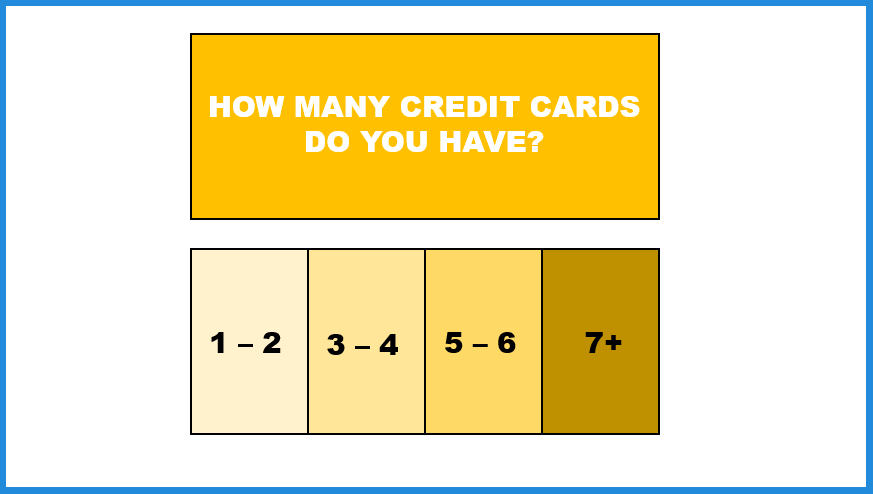
Obviously, yours will look a lot, lot, better than this, but it’s just a quick example.
Though the question won’t set any hearts or minds on fire, you’ll be amazed by how many people make that click.
See, it’s almost an impulse. Have you ever wanted to mess with a light switch, even though you know it’s definitely only a light switch? These quizzes work precisely the same way.
Next thing you know, the user’s made the next click, and they’ve hit your advertorial (the middle of your sales funnel).
Because these mini-quizzes don’t look like advertising, our conversion rate is much higher. Collection ads consistently perform at a level higher than any of the video or single-image ads we make – and we’ve only been using them for 3 months.
💡 Top Tip For Facebook Ad Hack #2
The possibilities with collection ads are endless.
At the moment, FlexxDigital are purely using the ads to improve click-through-rate (CTR) and the cost-per-click (CPC).
This means that any click the user makes will lead directly to the same advertorial. The quiz-like question has done its job and ignited the prospect’s curiosity – leading to the engagement we need to get them into the funnel.
If you look at the FlexxDigital collection ad below, you’ll see that it’s an effort to promote health insurance. As any of the illnesses mentioned will lead to the same solution (investing in health insurance), it isn’t necessary to complicate the funnel with multiple advertorials.
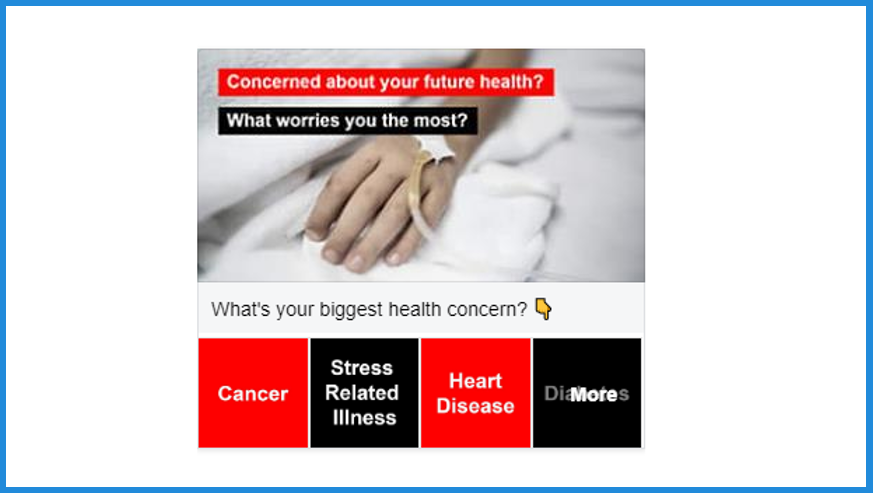
Facebook Ad Hack #3: Create Curiosity
“Wait!” You say. “This isn’t an ad hack… just a general guideline, surely?”
That may be true, but so many people miss the point of Facebook ads, it bears repeating.
I’ll say it again, just to make sure the message is clear:
Stop trying to sell in your Facebook ads.
Both hacks I’ve told you so far (and plenty of others if you regularly follow this blog), have advised you to make your Facebook ads as little like ads as possible.
As I said in the introduction, people are on Facebook to write sugary comments about their best friend’s outfit choice, not to be sold to.
And, because they’re so busy trying to find the next post to give them that dopamine hit, a whopping 70% of people only read the headline before sharing the content.
Get a good headline going, and you’ll soon see a huge difference in your click-through-rate (CTR) and the cost-per-click (CPC) of your Facebook ads.
How Does It Work?
You’ve got about 3 seconds to make an impact, and AdEspresso says that the optimal number of words in a Facebook headline is 5.
It may sound easy, but writing a relevant, clickable headline is surprisingly frustrating. You may find you need to draft 10, 15 or 20 before you come up with a winner.
But before you sag with defeat, here are a couple of pointers to help you out:
Four Pointers:
- Be clear and precise. If your headline could represent anything, then it’s not a good headline. Sparking curiosity isn’t the same as being infuriating vague.
- Use superlatives. So, general consensus says that people are fed up with words like “awesome” and “amazing”, and yet they continue to work. It seems that people can’t resist anything new or shiny, or what promises to be a quick-fix. It must be ingrained into us.
- Action words, too. No, not “buy”. Action words like “get”, “try” or “learn” taps into people’s curiosity and promises to lead to some sort of solution. “Buy”, on the other hand, suggests the solution is tied in with a transaction. That’s like throwing cold water onto sun-warmed skin.
- Be negative. No, I’m not deliberately contradicting myself. If you’ve called something “amazing” so many times it’s lost its effect, try the opposite.
See, humans (like you and me, lol) like to read things that tap into the four S’s:
Shock
Shame
Surprise
Strong emotional response

The ad world can be glutted with superlatives, making some sales-pitches (aka, not those related to the glamorous stuff like shoes, food and clothes) sound disingenuous. Everything is sold as “astonishing” or “groundbreaking” or “fabulous” and, most of the time, the product/service turns out to be functional at best.
Here are some examples of good “negative” headlines:
1. 7 Reasons Your Ads Are Destined To Fail (confrontational)
2. One Small Mistake Means This Mum Is $200,000 In Debt (scare tactics)
3. How Lindsay Lohan Destroyed Her Looks (taps into insecurity)
Not only are all these headlines short enough for a Facebook ad, but they all also deliver on the intrigue/solution front. Overall, the message is: learn about these people, don’t do what they do, and you should be fine.
That’s All For Now, Folks
I hope that these ad hacks will be useful when it comes to your next ad campaign.
(Trust me, they will be)
If you liked these hacks, we’ve got plenty more that we’d love to share with you. Just head on over www.flexxable.com and tell us exactly how we can help you.
Likewise, if you’ve got any tip-top ad hacks under your belt, don’t be a stranger. Share them in the comments below!
___________________________________________________________________

